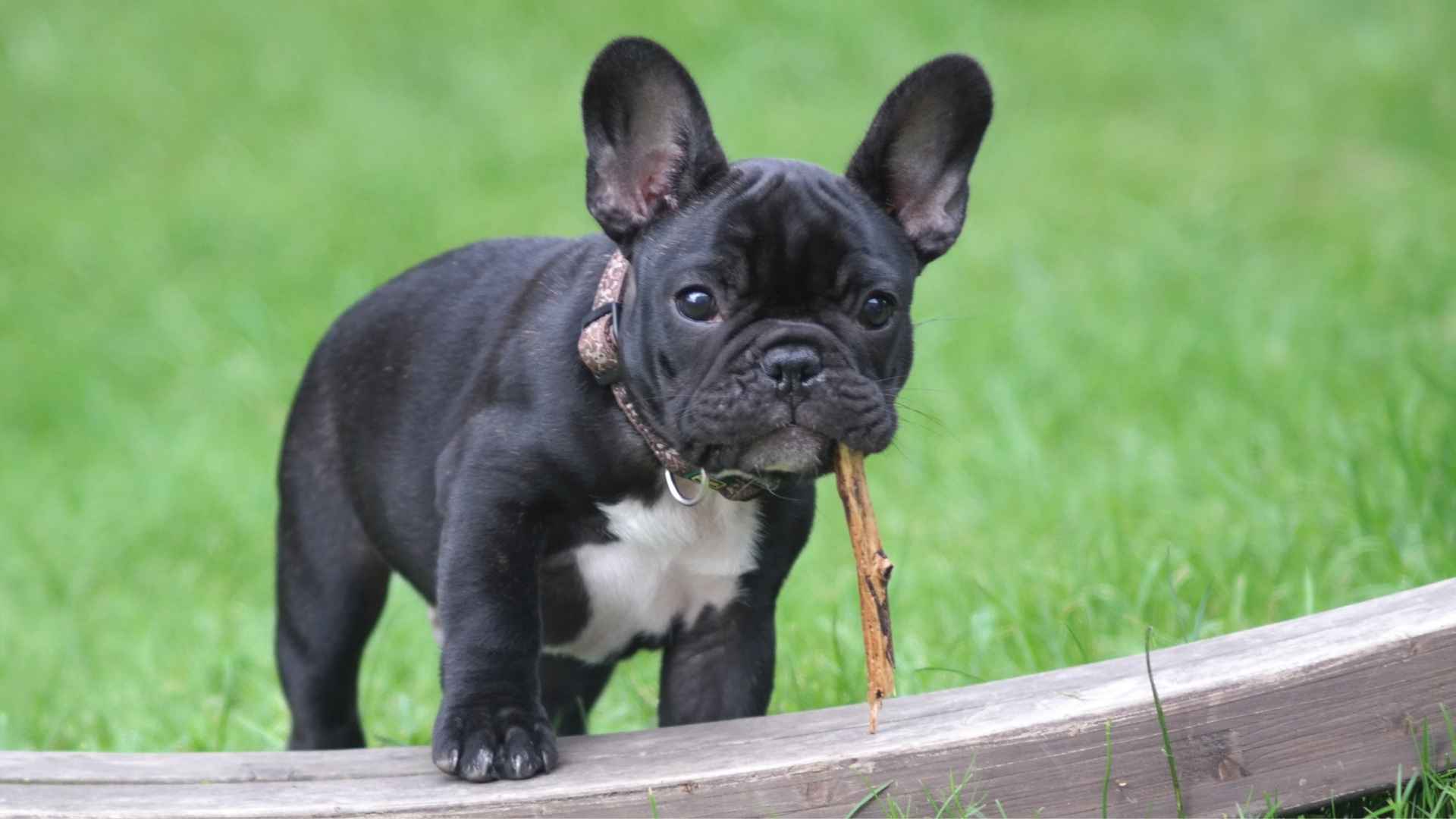If you’ve ever fallen for a pup with a smooshed little face and big round eyes, you’re not alone—short-snout dog breeds are adored for their cute, expressive looks and charming personalities. These flat-faced breeds, also known as brachycephalic dogs, include favorites like Pugs, Bulldogs, and Shih Tzus. But while their signature short snouts are undeniably lovable, they can come with some serious health risks.
“Brachycephalic” literally means “short-headed,” and it refers to flat-faced dog breeds and their shortened muzzles. This unique facial structure can make breathing a bit harder for them, especially during exercise or hot weather. Many of these breeds are prone to brachycephalic obstructive airway syndrome (BOAS), which can cause noisy breathing, panting, and even trouble under anesthesia.
In this post, we’ll explore popular short-snouted dog breeds, what makes them so special, and what you should know before bringing one into your home.
Short snout dog breeds
1. Bulldog
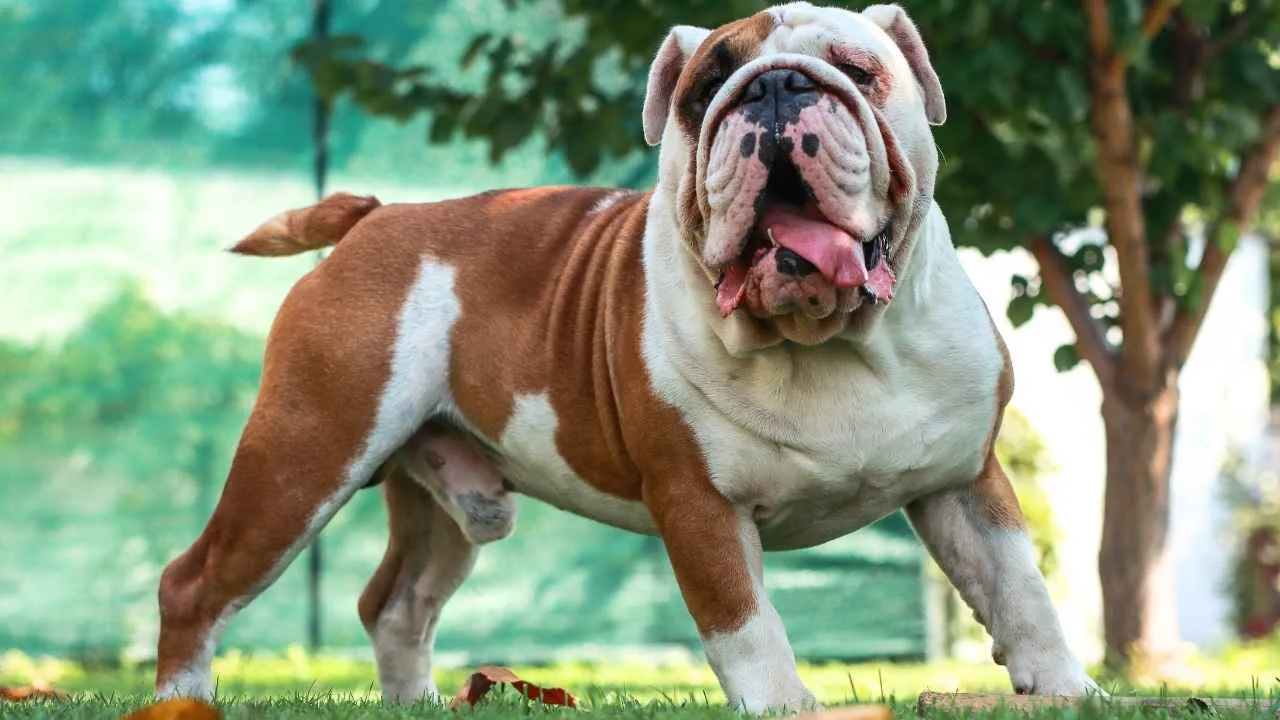
Originally bred for bull-baiting, the English Bulldog of today is a far cry from its aggressive past. Selective breeding has mellowed their temperament, turning them into affectionate, laid-back companions who thrive in family settings and typically get along well with kids and other pets when socialized early.
Standing about 14–15 inches tall and weighing 40–50 pounds, Bulldogs have a low, muscular build and an iconic appearance, complete with saggy jowls, wrinkled brows, and a trademark underbite that adds to their charm.
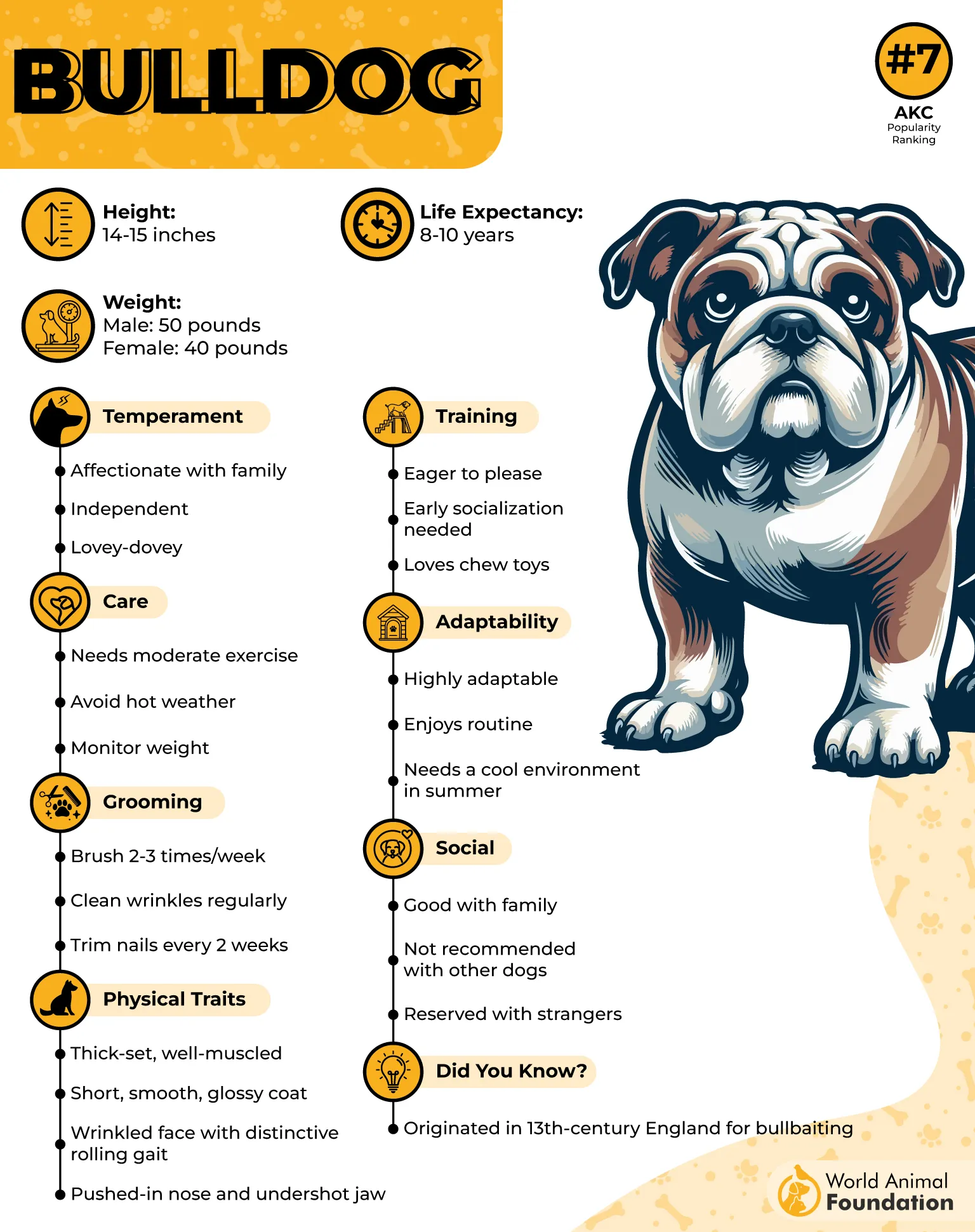
A brachycephalic breed, Bulldogs have flat faces and short snouts, which can lead to breathing difficulties, especially in warm weather or during exercise. This condition, known as brachycephalic airway syndrome, stems from structural traits like narrowed nostrils and overlong soft palates.
Walks should be kept short and scheduled during cooler parts of the day, and air-conditioned environments are essential in the heat.
Their signature wrinkles are adorable but high-maintenance. Skin folds can trap moisture and lead to skin infections, so it’s important to keep them clean and dry, especially after baths or outdoor play in wet weather.
Despite their relaxed vibe, Bulldogs still need daily movement to stay healthy and manage weight. A short stroll or a bit of indoor play usually does the trick. For those affected by airway issues, only light activity is recommended, and they should be monitored for any signs of respiratory strain.
Bulldogs are loyal, mellow dogs and in fact, gentle giants who tend to form deep bonds with their humans. They’re not big barkers or diggers, but boredom can lead to mischief. Mental stimulation through toys, training games, or extra cuddle time helps keep them happy and well-behaved.
2. French Bulldog

It’s easy to mix up a French Bulldog with a Boston Terrier, especially at first glance. Both are small, sturdy, flat-faced breeds with big ears—but look closer, and you’ll spot the differences. Frenchies are stockier, with a broad, square head shape, large, round eyes, and those signature bat-like ears that make them instantly recognizable.
Weighing in at no more than 28 pounds, French Bulldogs are compact but muscular dogs. They sport a smooth, short coat over loose, wrinkly skin. While show-quality Frenchies are typically fawn, cream, or white, pet Frenchies can also come in colors like black, tan, liver, or merle.
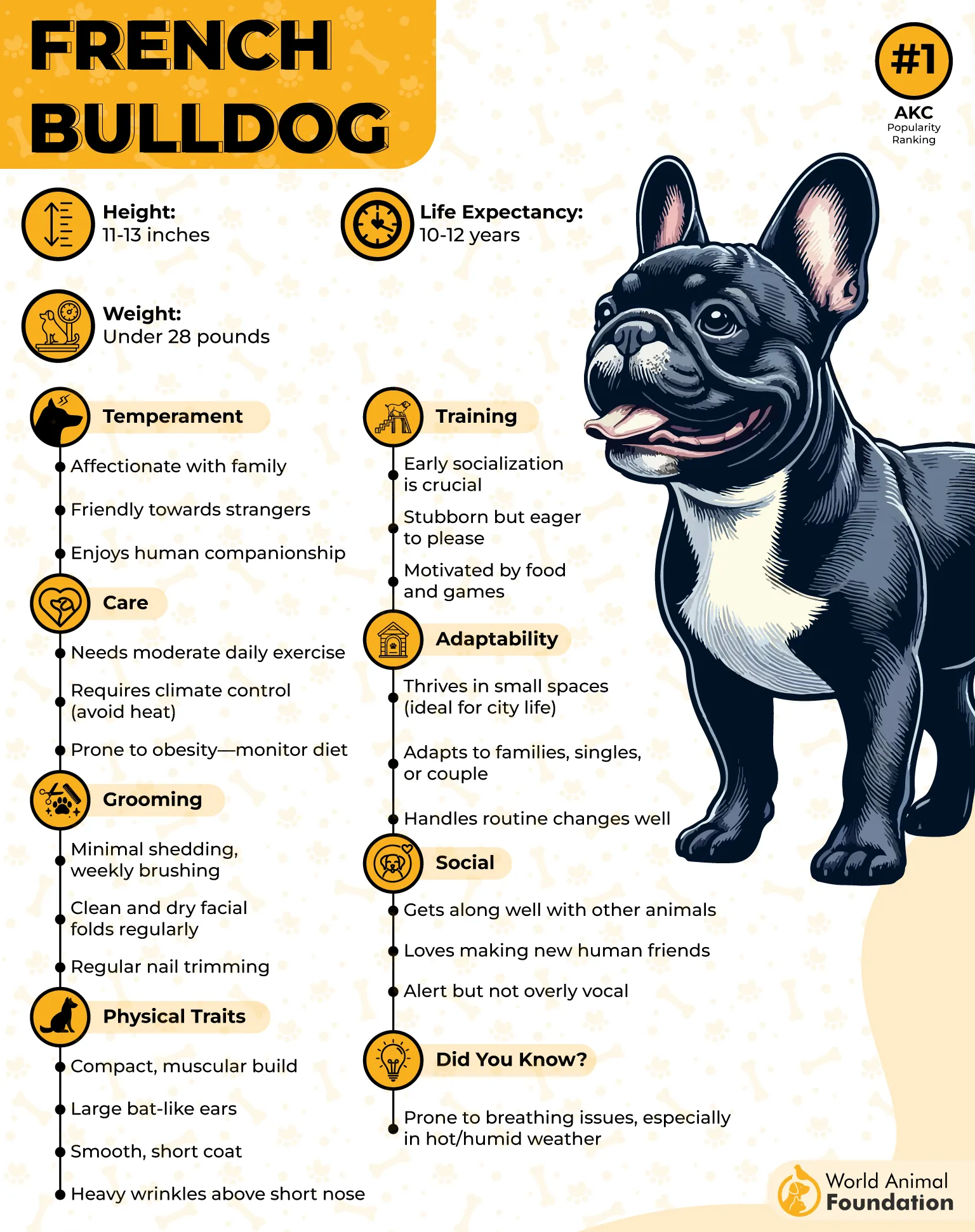
French Bulldogs don’t need much exercise—a couple of short walks a day usually does the trick. They’re perfect for apartment and city life as long as they get a bit of daily playtime. But because of their brachycephalic (short-nosed) anatomy, they can struggle in hot and humid weather, states Britannica.
Their flat faces make panting less effective, so overheating can happen quickly. Always keep them cool, especially during warmer months.
Despite their playful nature, Frenchies aren’t built for intense activity, and definitely not swimming. Their heavy heads and short legs make it tough to stay afloat, so pool safety is a must. Also, jumping on and off furniture can stress their joints, so it’s best to keep things low-impact.
French Bulldogs often require C-sections when giving birth due to the size of the puppies’ heads in relation to the mother’s birth canal—a condition called dystocia. It’s just one of the many reasons responsible breeding and vet care are so important in this lovable breed.
3. Bullmastiff
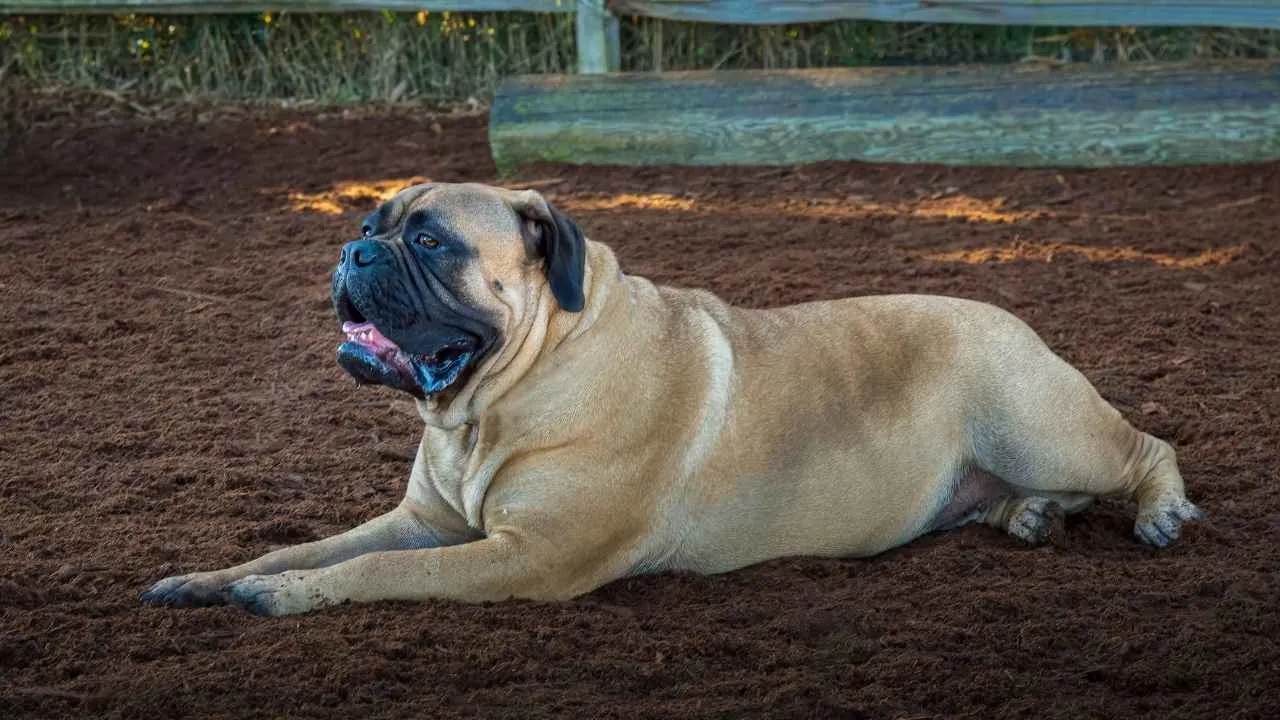
Bred in the 19th century to guard estates, the Bullmastiff is a powerful yet gentle breed. Originating from a mix of the English Mastiff and Old English Bulldog, these dogs earned the nickname “Gamekeeper’s Night Dog” for their protective nature. Today, they’re known for their loyalty, calm demeanor, and strong guarding instincts.
Bullmastiffs have a solid, muscular build with a typically short muzzle. While many show brachycephalic traits, muzzle length varies and can lead to breathing distress; some may require surgery to improve airflow. Generally quiet and mild-mannered, they bark little but benefit from early training to ensure good behavior.
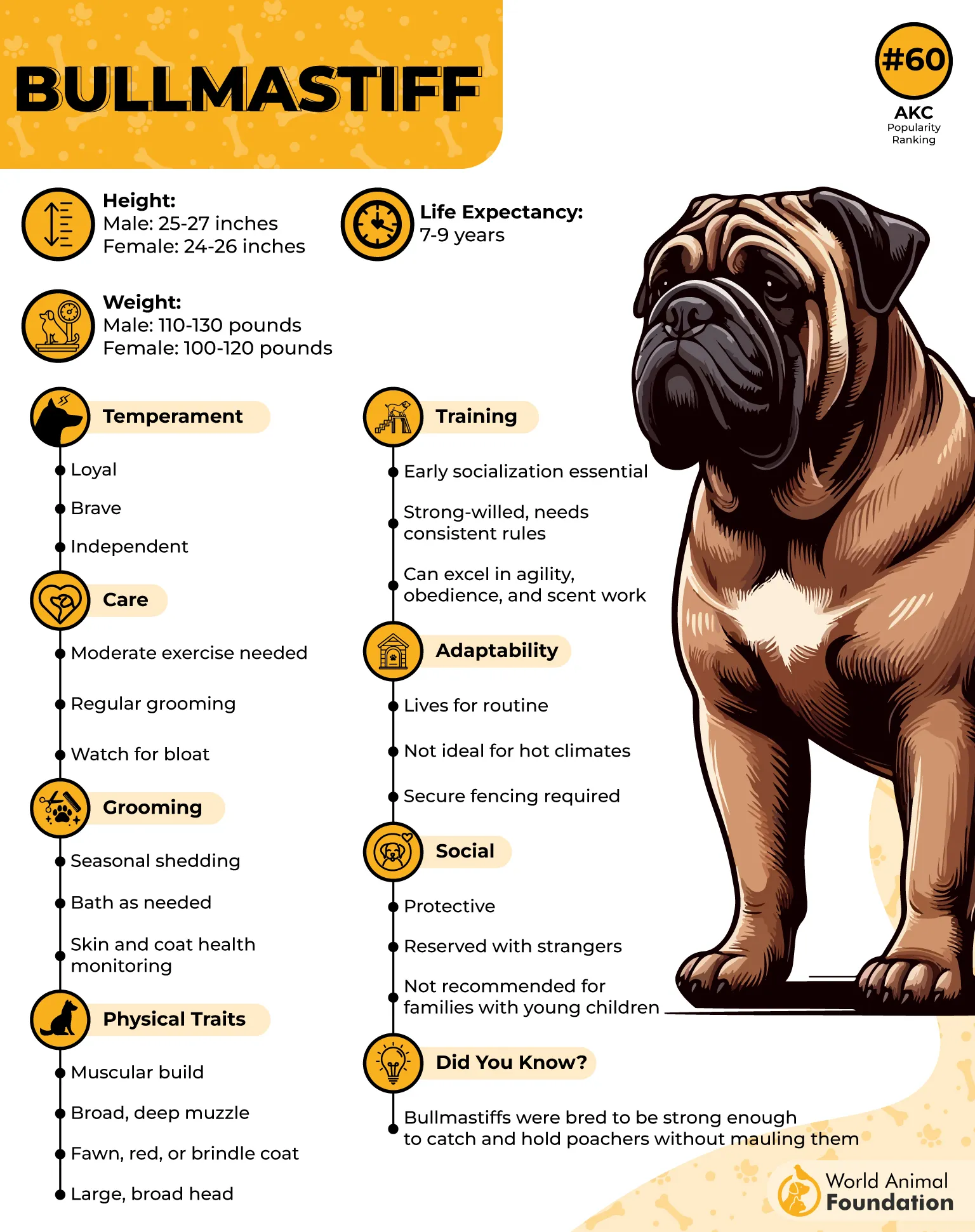
Despite their size, Bullmastiffs have relatively low energy and are content with a couple of short daily walks. They adapt well to apartment living if socialized properly from a young age. Without early exposure, they may show aggression toward other pets. Due to heat sensitivity, they should always stay indoors and cool during warm weather.
Shedding is minimal, and grooming needs are modest, making Bullmastiffs fairly low maintenance. However, like many large breeds, they can face health issues such as hip and elbow dysplasia, entropion (eyelid problems), progressive retinal atrophy, subaortic stenosis (a heart condition), and hypothyroidism.
With proper care, training, and a loving home, the Bullmastiff is a devoted companion dog and gentle guardian who stays loyal by your side.
4. Brussels Griffon
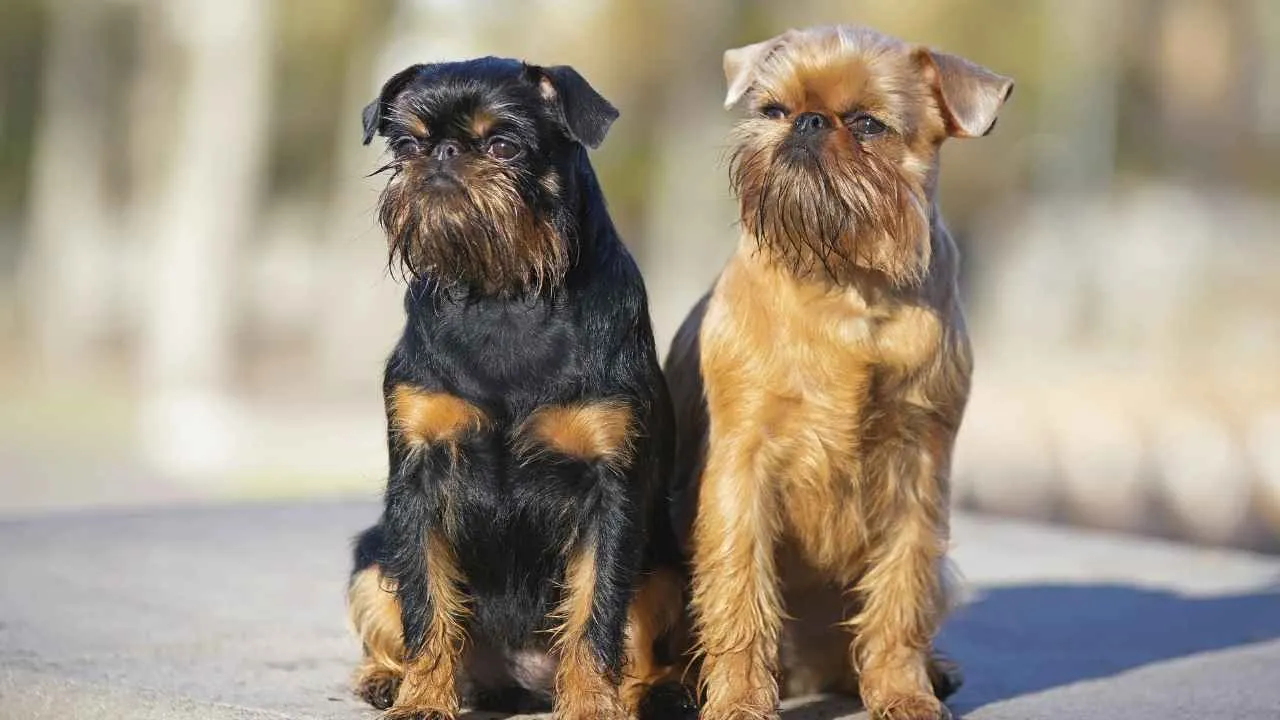
With their almost human-like expressions and soulful eyes, Brussels Griffons are truly lovable. These small dogs weigh between 6–14 pounds and stand 7–10 inches tall, but carry a lively, mischievous spirit. Their expressive faces and distinctive trot reflect their origins as vermin hunters in 1800s Belgium.
Brussels Griffons thrive on close companionship and form strong bonds with pet parents. They love being near their favorite person throughout the day and rarely enjoy being left alone. If you want a devoted shadow, this breed fits perfectly, but they’re not suited for those seeking an independent dog.
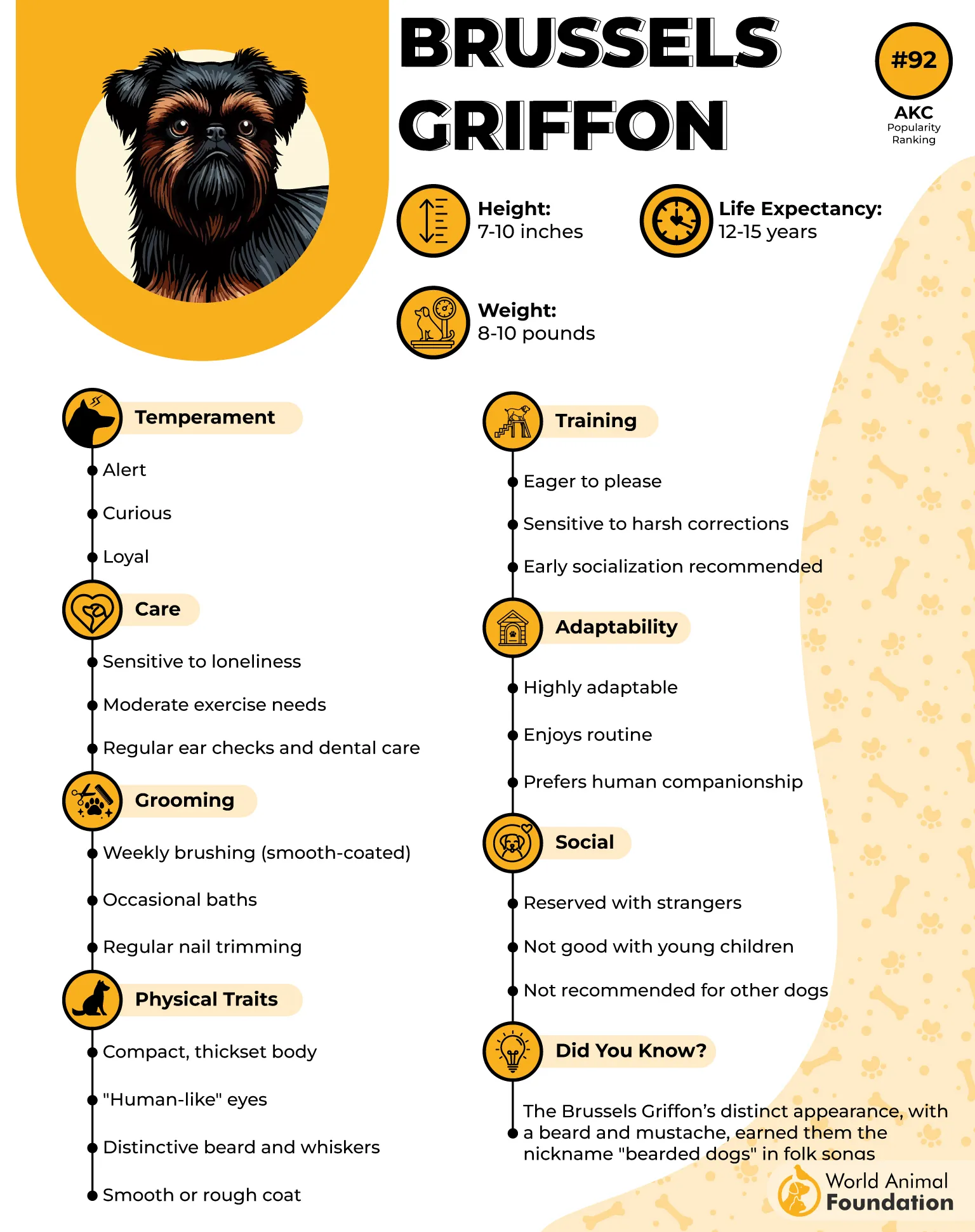
Intelligent and playful, these little dogs are natural entertainers. They learn quickly but can show stubbornness, making early and consistent, proper training important. Positive reinforcement helps them respond well to commands and develop good manners, as per Purina.
Despite their small size, Brussels Griffons have a bold personality and tend to bark at unfamiliar sights and sounds, making them effective watchdogs. However, without proper guidance, this can lead to excessive barking, so teaching a quiet command early helps maintain balance.
As a brachycephalic dog breed, their short snouts make them sensitive to heat, humidity, and extreme cold. It’s best to keep them indoors in comfortable temperatures year-round, providing extra care such as cozy sweaters in winter or cool rest spots during warmer months.
5. Pekingese
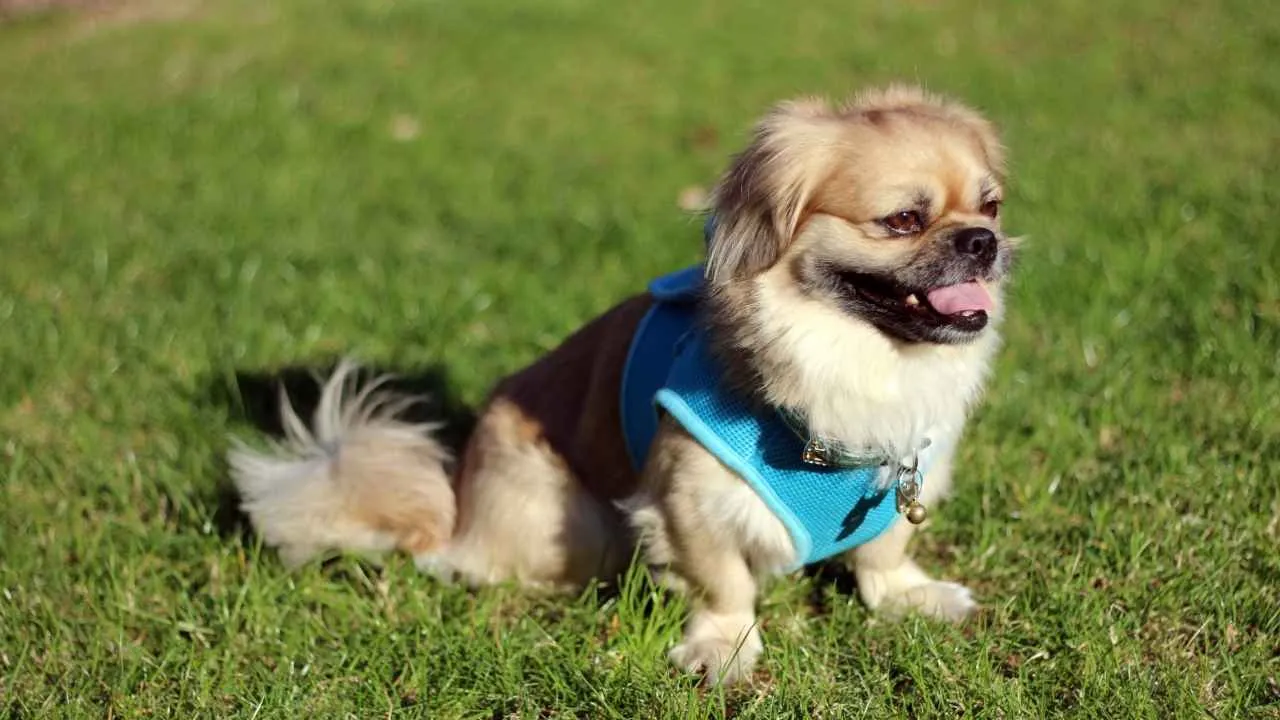
Pekingese dogs, bred in Ancient China to lounge in the laps of royalty, carry a noble history that dates back centuries. These small dogs, standing 6–9 inches tall and weighing up to 14 pounds, arrived in the West in 1860 as prized treasures. Their thick double coat, especially the lion-like mane around their neck, still reflects their aristocratic past and dignified presence.
Affectionate and confident, Pekingese form strong bonds with their favorite people but can be stubborn. They usually enjoy a calm home life but don’t tolerate long periods alone, often developing separation anxiety. Their alertness makes them vocal watchdogs, so early socialization is important to prevent excessive barking.
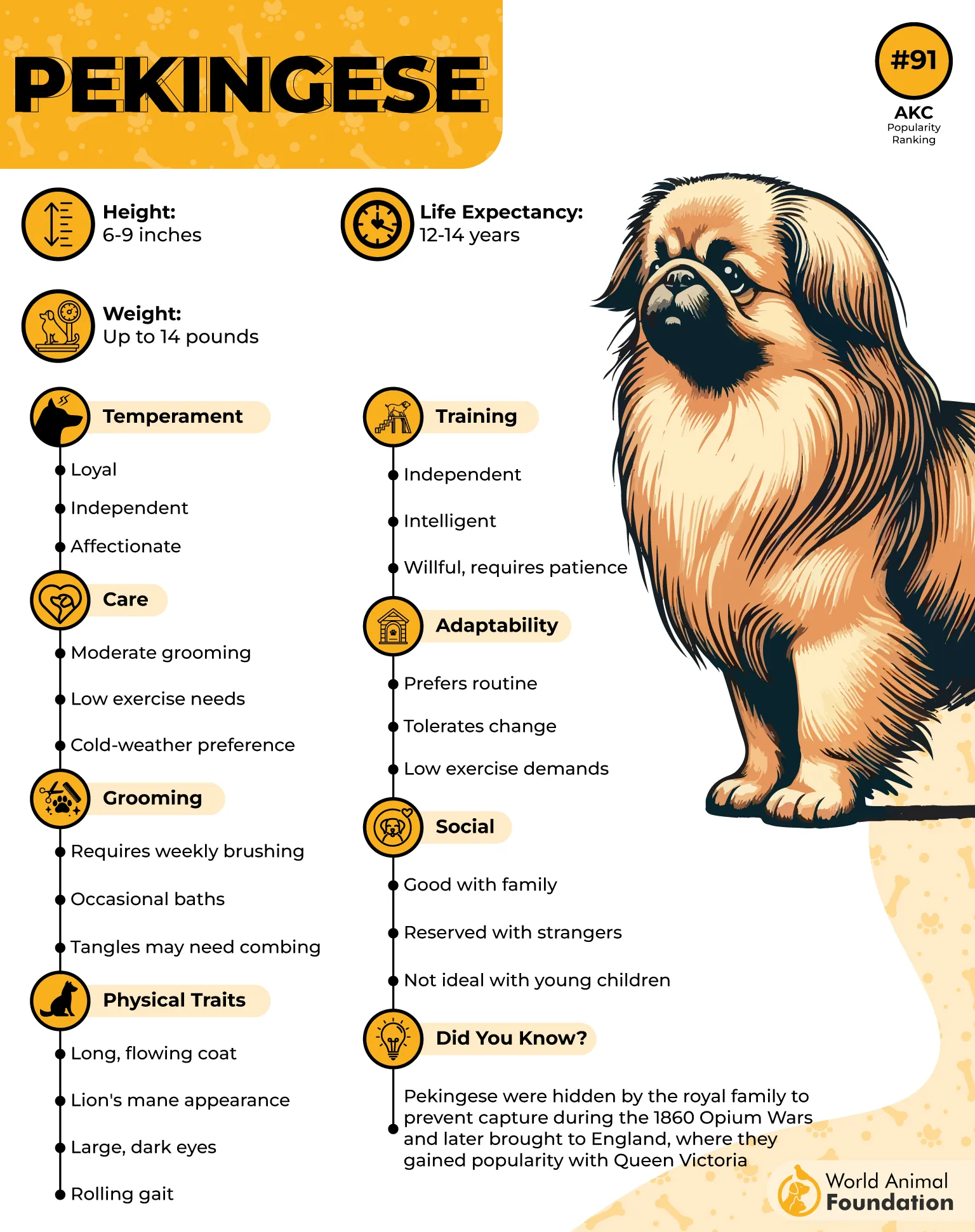
Despite their regal roots, Pekingese require regular grooming to prevent matting, particularly around their mane. Their exercise needs are moderate, but their flat faces make them sensitive to heat, so avoid strenuous activity in warm weather.
Like many brachycephalic breeds, they are prone to respiratory issues such as brachycephalic obstructive airway syndrome (BOAS), as well as eye problems, skin fold dermatitis, dental diseases, spinal disorders, and joint concerns like patellar luxation. Gentle handling and routine vet care are essential to keep them healthy.
6. Boxer
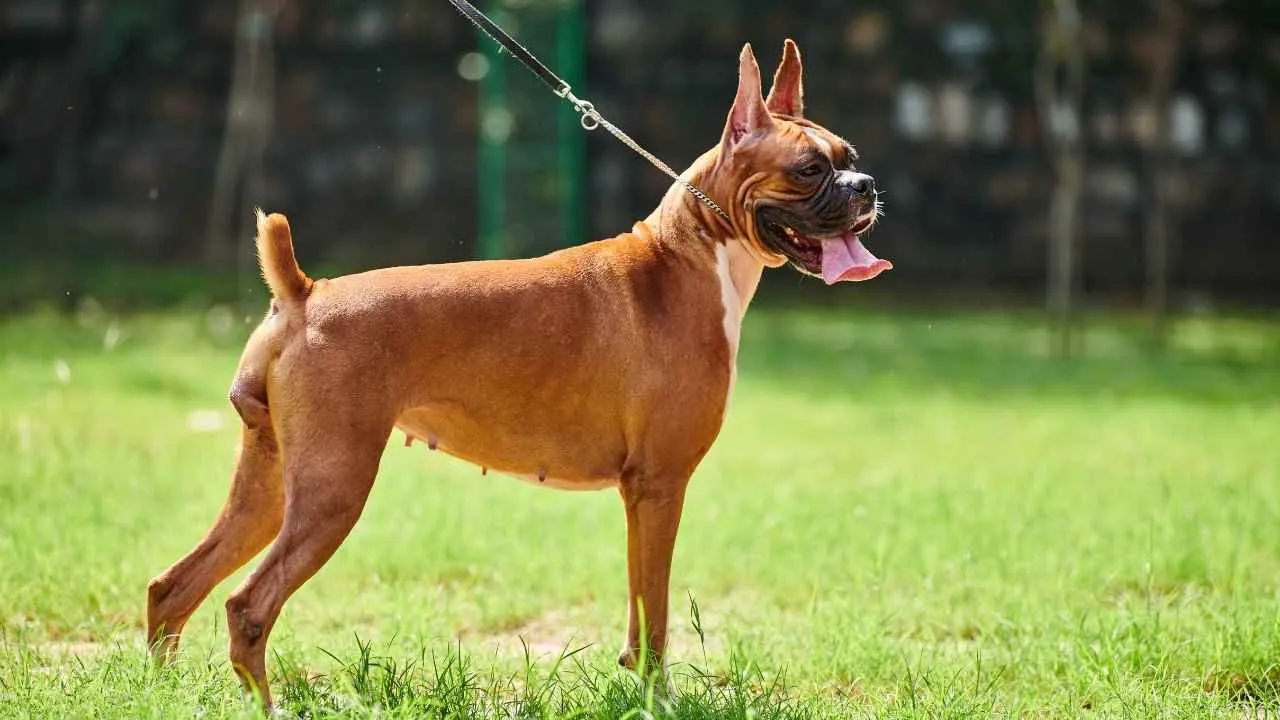
Originally imported from Germany in the 1930s, Boxers were prized for their hunting abilities and still retain an athletic edge. These medium-sized dogs, weighing 65–80 pounds and standing 21–25 inches tall, are deep-chested and well-muscled, known for their powerful build, playful leaps, and love of running.
Their distinctive, smooshed, pushed-in face wasn’t just for show—it helped during hunts. A short snout, shortened upper jaw, and facial wrinkles gave Boxers a strong grip on prey while allowing them to breathe even with their mouths full. The wrinkles also kept blood away from their eyes, reflecting their working-dog heritage.
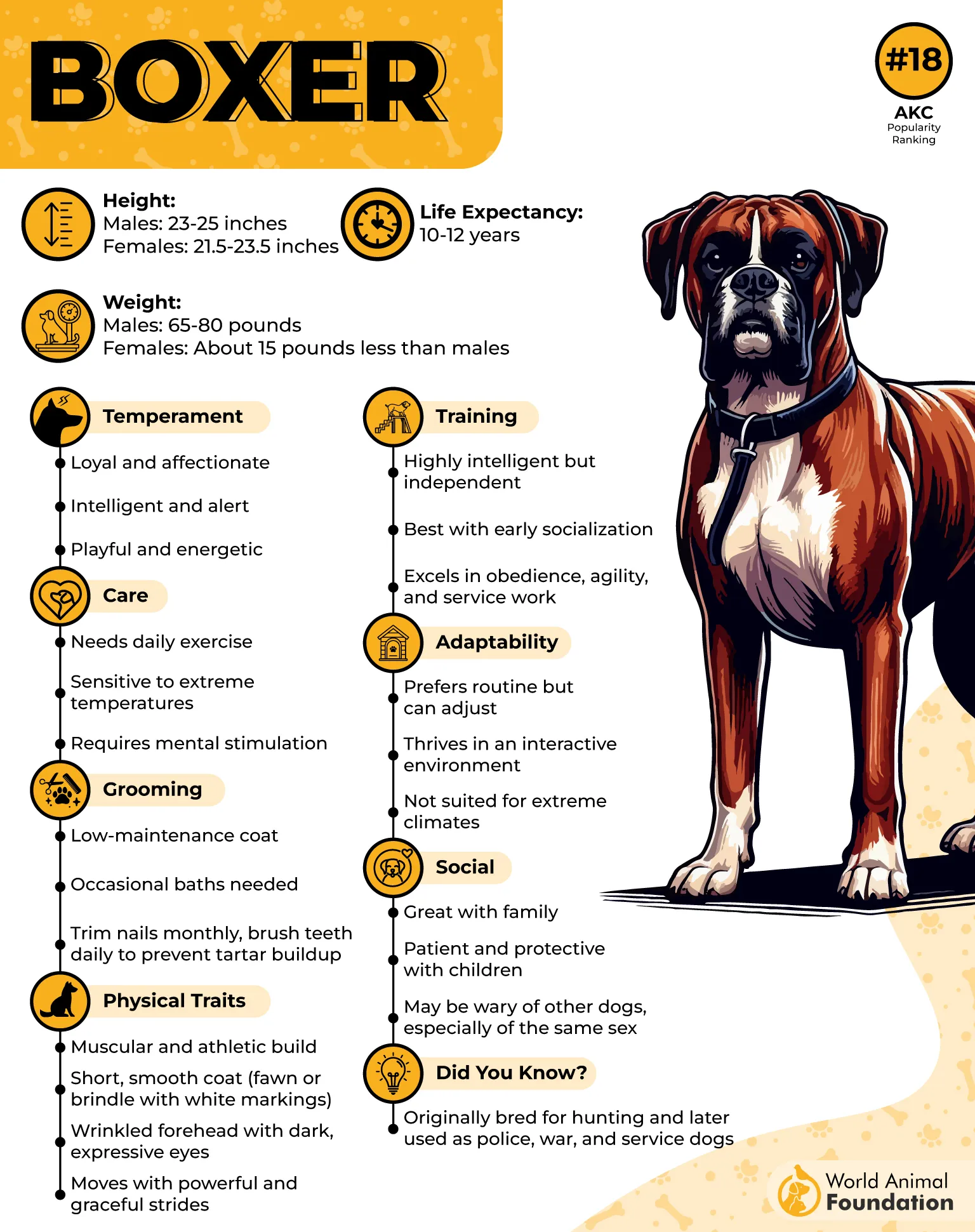
What truly endears Boxers to families is their joyful, affectionate nature. With sparkling eyes and goofy expressions, they bring energy and fun to any home. They love to play, are great with children, and serve as loyal companions and watchdogs. Intelligent and eager to please, Boxers excel in obedience training, agility, and even police work.
Boxers are brachycephalic, so their flat noses can cause respiratory distress and increase heat sensitivity. They typically live 10–12 years and may face health risks common to the breed. Regular veterinary care and preventive measures are key, and many owners opt for pet insurance to stay prepared.
Fun Fact:
While Boxers were bred for short snouts, their tongues didn’t get the memo! One famous Boxer, Brandy, holds the world record for the longest dog tongue—an incredible 1 foot 5 inches long. Now that’s something to wag about!
7. Affenpinscher
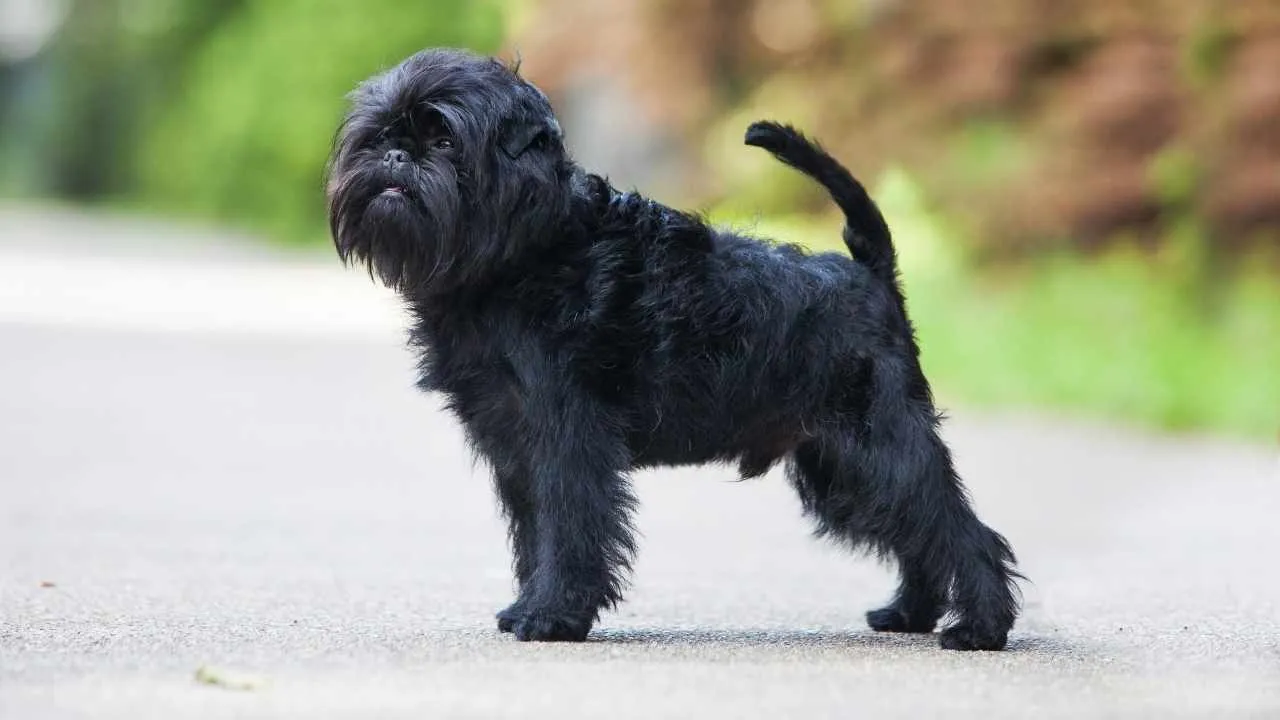
Affenpinschers are a rare toy breed with roots in 17th-century Germany, originally bred to hunt rats in homes and stables. Despite their small size—just 9–12 inches tall and weighing 7–10 pounds—these dogs are fearless and full of personality. Their name means “monkey dog,” a nod to their expressive faces, short muzzles, and comical charm.
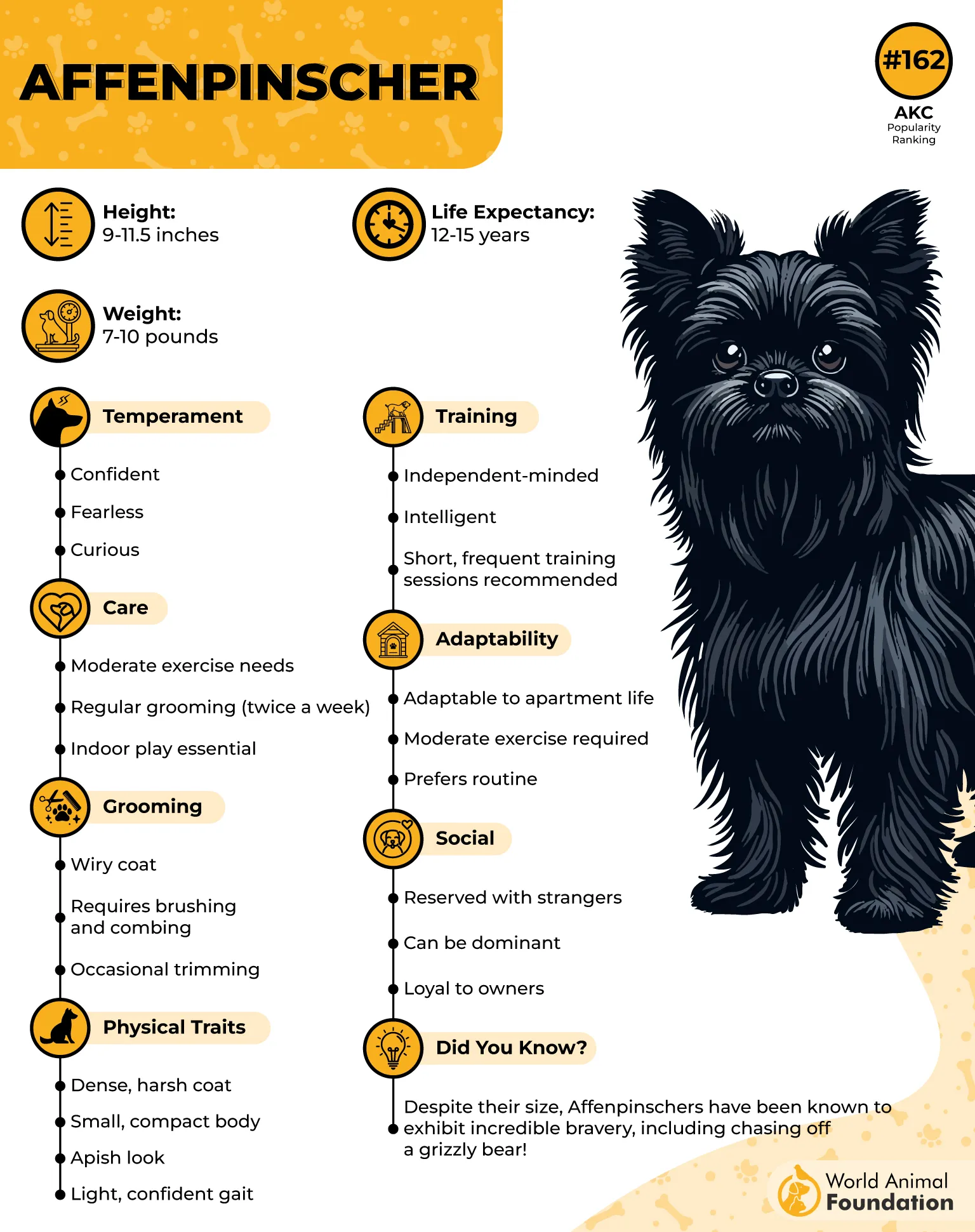
These scruffy-coated companions are bold, curious, and always ready to play. Though they’re generally quiet, they don’t hesitate to show their fiery terrier side when excited. Affenpinschers form strong bonds with their humans and love being involved in daily activities. Their quirky nature and human-like expressions make them delightful to live with.
Health-wise, Affenpinschers are fairly sturdy, with a typical lifespan of 12 to 15 years. Still, a brachycephalic breed struggles with breathing issues like brachycephalic airway syndrome, especially in hot weather or if they’re overweight. Keeping them cool, active, and lean goes a long way in preventing discomfort, states PetMD.
Some Affenpinschers may also face conditions like patellar luxation, hip dysplasia, or mitral valve disease as they age. Cataracts can be a concern, too. Choosing a responsible breeder and keeping up with routine vet care can help your Affen lead a healthy and happy life.
Conclusion
When it comes to flat-faced puppies and other flatter-faced dogs like Cavalier King Charles Spaniels, Japanese Chin, Lhasa Apso, and Chow Chows, understanding their unique health considerations is crucial.
These popular breeds, often selectively bred for their distinctive short snouts, are prone to brachycephalic syndrome—a condition affecting the dog’s airway and leading to breathing problems, difficulty regulating body temperature, and other health concerns.
Dogs with flat noses may also face issues like gum disease, ear infections, and tear film problems that impact eye health. English Toy Spaniels and French Mastiffs, among other breeds, share these risks, making early awareness and proper care essential.
Recognizing the challenges these dogs face helps pet parents manage potential health problems and ensure their companions live happy, comfortable lives alongside other animals in the family.


